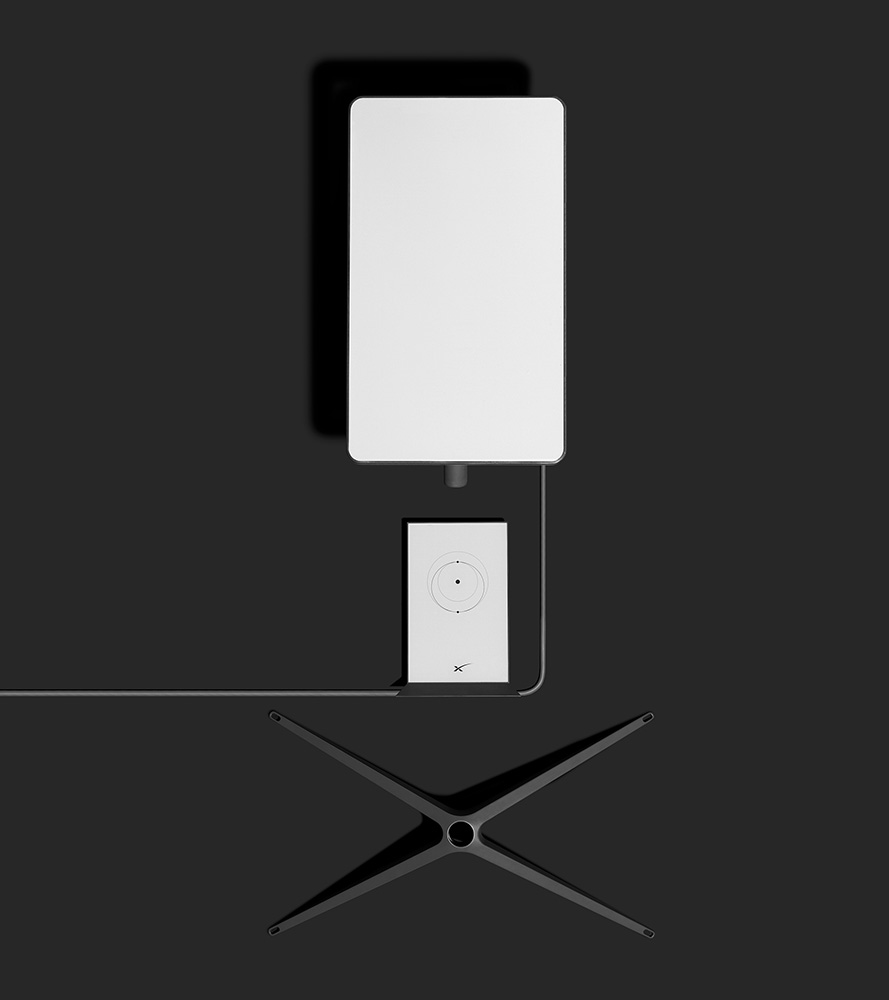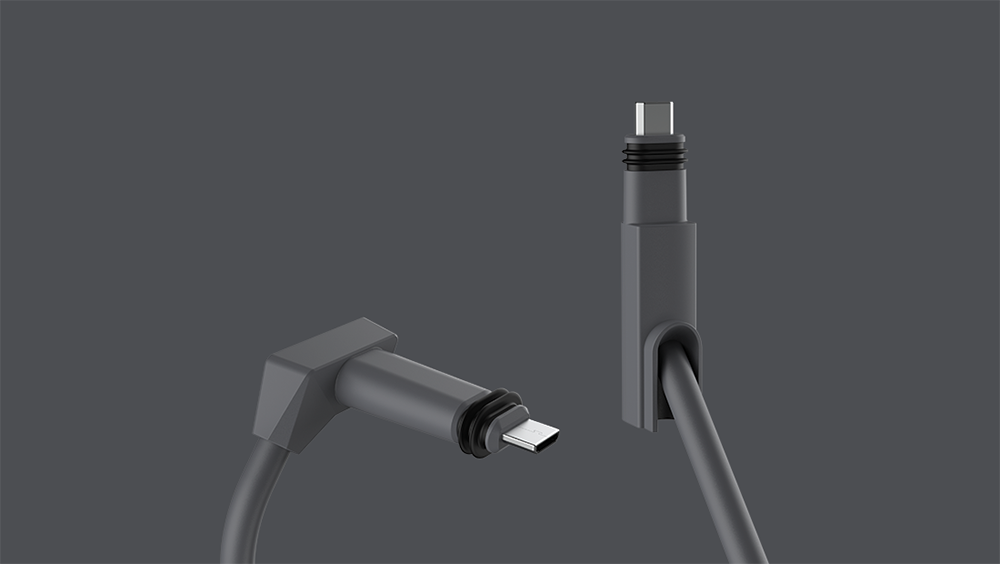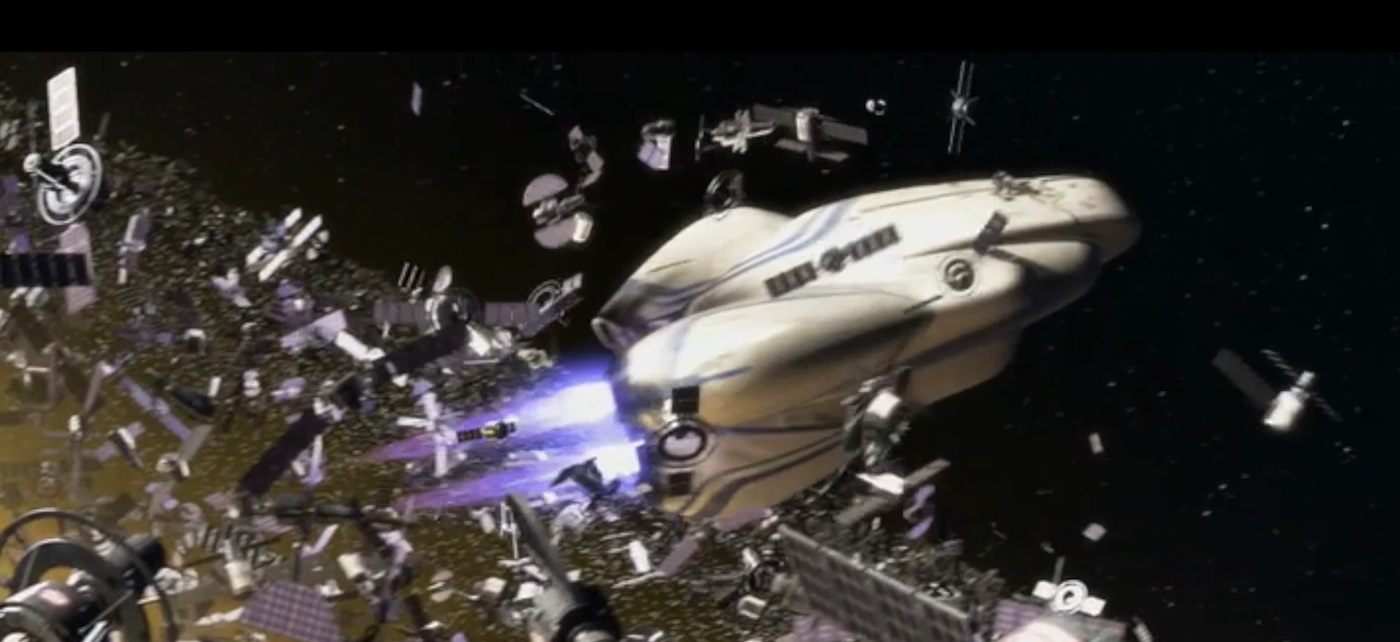

I took down Starlink (but I haven't cancelled)
source link: https://www.jeffgeerling.com/blog/2022/i-took-down-starlink-i-havent-cancelled
Go to the source link to view the article. You can view the picture content, updated content and better typesetting reading experience. If the link is broken, please click the button below to view the snapshot at that time.
I took down Starlink (but I haven't cancelled)
February 2, 2022
Today's video is about Starlink—I've had an active subscription since last February, and as it's been a year, I figured I should post an update.
The tl;dr: when I had a new roof put on late last summer, I took down 'Dishy McFlatface', but I haven't put the dish back up. I have been holding out hope I could transfer my hardware to my cousin, who lives on a farm 70 miles away, and only gets 300 Kbps upload on her DSL, but so far that seems to be a pipe dream.
In the video below, I outline four problems that have tempered my optimism when it comes to SpaceX's Starlink Internet service:
The rest of this post is a lightly-edited transcript of the video.
I took Dishy McFlatface off my roof, and I haven't been using Starlink for a couple months now, even though I'm still paying for it. More on that in a bit.
I had to take the dish down to get a new roof put on, and I didn't want the roofing company to try taking down the dish for me.
But I haven't put the dish back up on my roof yet. And I might not, I'm not sure yet.
But why? There are thousands of people who are still waiting for access to Starlink. Have I already become an entitled tech YouTuber flaunting Elon Musk-related things for clicks?
No, not really. I mean, my intention with Starlink was to test it and see if it'd be adequate to replace my weak cable Internet access. If it didn't work out, I'd pass along the hardware to my cousin, who lives out on a farm with even worse Internet, with upload speeds measured in the kilobits per second.
That's the first problem that soured my outlook on Starlink.
But there are four problems I wanna highlight:
- Starlink's preorders and coverage
- Flaws with the new Starlink router
- Power consumption
- Issues with the Starlink satellite constellation itself
Access and Expansion
Talking about anything even remotely connected to Elon Musk is risky business. I get that. There are people reading this who think he's a real-life Iron Man, come to save our planet and break through all the bureaucratic red tape to build the tech governments and stodgy old corporations can't.
Then there are other people reading who think he's the commensurate con-man: a snake-oil salesman who announces something so radical but just barely believable, sucks up billions of dollars from gullible sycophants, and never delivers on lofty promises.
I think the truth is somewhere in the middle, personally. And there are plenty of times where it's obvious Elon doesn't have anyone reining in his worst tendencies. But this post isn't about Elon. It's not about Telsa, or the solar roof. It's not about the perpetual delays to full self driving, robotaxies, or the Cybertruck.
This post is about something that exists, and people are actually using. It's about Starlink, SpaceX's fledgling constellation of thousands of satellites blanketing the world with high speed Internet.
But here's the problem: it's not blanketing the world yet.
I pre-ordered Starlink the day the public beta was announced, and got it only a few months later, in February 2021.
I have an entire video about my initial Starlink experience. I won't re-hash everything from that video, but I came away cautiously optimistic.
But what frustrates me the most is mobility. Not in trying to move around with my dish like on an RV or boat, but rather the difficulty in moving to a new address, or transferring the dish to someone else.
My initial plan—before discovering it was impossible—was to test Starlink at my house, and transfer it to my cousin if she could make better use of it.
And it's still impossible for me to do that, a year later, even though she lives just 70 miles away.
Technically, Starlink now allows changing the service address. That wasn't even a thing until late last year. But even so, that assumes coverage is available at the new address. And 99% of the time, it isn't. And technically, you can also ask to have the hardware transferred to a new owner, but that process has the same problem.
The support reps I've talked to mentioned I could cancel service and try to set it up again later, but if I do that, I'd probably end up in back of the pre-order queue, even though I already have Starlink hardware.
Once coverage is opened up in the area where my cousin lives, I still intend to give my kit to her. Hopefully it'll happen. But I'm not going to bet on it happening any time soon.
My cousin even put in a pre-order in March last year. Her initial estimate was 'mid to late 2021'. In late 2021, that estimate was changed to 'late 2022', but after seeing perpetual delays with other Musk-related ventures, how much faith can I put in that date?
Meanwhile, Starlink's been holding onto an interest-free loan to the tune of fifty-million-plus in unfilled pre-orders. My cousin's still in that group, but for how long?
Note: I know $50 million isn't a huge deal when it comes to Starlink's operating costs—but it's more the principle of the matter.
Some people have had enough and are pulling out from Starlink, especially if they found better LTE or 5G coverage, which is improving, though not very fast, in some parts of the US.
Now, I know there are technical reasons SpaceX is slow to expand. Part of it is due to the portion of the constellation still waiting to be deployed and bandwidth on existing satellites. And judging by how sporadic response times are with support, they probably need more time to grow their ISP-related operations too.
And the chip shortage hasn't helped either—I'm guessing they're putting out all the hardware they can build. But it's a hard pill to swallow for those who pre-ordered over a year ago, and now have a vague promise of getting Starlink in the next year... maybe.
So that's my biggest gripe. In my polyannic optimism, I assumed SpaceX would be a lot further along by now, especially in their home country.
But they're not.
The Hardware: One Step Forward, Two Steps Back

SpaceX also made a couple baffling decisions with their new 'version 2' user terminal kit—that's the hardware package you get.
I have the 'version 1'. Both versions come with a dish, a stand, a long cable, and a router, and my older kit also has a separate power brick.
This original kit came with a heavy round dish (23" in diameter), but the new one comes with a smaller 19x12" rectangular dish. That dish is also half the weight of mine. That makes it easier to ship and transport, and means it doesn't need as strong of a dish mount.
That's a positive change, but there are a couple puzzling and outright user-hostile changes to the rest of the kit.
The new router only does WiFi. There's no extra LAN port on the back, like I have on my older router. If you wanna plug a wired network into Starlink, you have to buy this ridiculous-looking twenty dollar dongle, which, by the way, is on backorder for at least a month.
That's, honestly, insane. Like... an RJ-45 connector costs pennies, and it's not like it's some exotic thing to support wired Ethernet on a network router!
And WiFi is great, but this new router doesn't even have WiFi 6! It doesn't matter if the external bandwidth can't go higher than a few hundred megabits, WiFi 6 would at least allow devices on the local network to communicate much faster with each other.
But, gosh, twenty bucks to add on wired Ethernet? What are they smoking over at Starlink HQ?
At least the new router has a wider base so it won't fall over if you look at it sideways. And it has a 'bypass' mode, so you could still use your own router in tandem with the twenty dollar LAN adapter. I guess that's something.
But here's the thing that really gets my goat: This new proprietary cable.

SpaceX has the gall to charge $60 for a replacement Cat5e cable. The reason? Some weird proprietary end connectors.
It looks kinda like mini HDMI, but it's not. But inside the wire itself, it's just vanilla cat5e twisted pair. You can get a shielded outdoor-UV-rated Cat5E cable for less than half what Starlink Charges. Or heck, make your own.
You shouldn't have to resort to hacking together homebrew PoE+ bridges just to overcome the weird proprietary connectors used by Starlink.
I digress, though. These connectors are dumb, and I can't think of a good reason they exist. There are ways SpaceX could improve networking hardware, but proprietary non-standard connectors ain't one of 'em.
The new router does allow SpaceX to drop the separate power supply my kit has. And I guess the setup instructions can drop a step or two.
But dropping a LAN port and switching to a proprietary connector are both categorically dumb.
Power Consumption
And you know what else is dumb? How much power Starlink's user terminal sucks down, continuously. In my video last year, I mentioned how my older dish would suck down 80 to 90 watts all day. And on snowy or icy days, the dish could peak at 140 watts!
Even if you're not trying to be energy conscious, adding a hundred watts of continous draw will make a noticeable impact on your energy bill.
Or if you're trying to go off-grid on solar and battery power, adding a hundred watts of continuous draw makes things difficult. It's a far cry from the 5-10 watts my router and cable modem or 4G modem use.
I get it, a complex phased array antenna like the one used in Starlink's dish is cutting edge for consumer equipment, and needs the power to do it's beamforming for satellites whizzing by in the sky.
I was hoping the new terminal would be a lot more efficient, and it seems to be, somewhat. It draws 50 watts under good conditions, but still spikes to 100-plus watts when it gets too cold or snowy. Even the older dishes have improved with recent firmware updates, but the power usage is still a necessary side effect of Starlink's tech.
And even 50 watts adds four bucks to your monthly power bill. Or seven if you live in California!
Kessler Syndrome, maybe. Astronomy issues, definitely!
The last problem is something that's gone from more of a hypothetical to a very real, visible problem.
And that's the quantity of Starlink satellites whizzing around in the sky above us.
During launch, when the satellites are grouped together and not in their final orbit, they can be fun to see in a little light train through the sky.
But despite their best efforts at adding visors to block sunlight from reflecting to the ground, SpaceX hasn't been able to prevent their satellites from impacting certain sky observations.
Researchers at the University of Warsaw estimated .5% of twilight observations at one facility were affected by Starlink satellites in 2019, when there were only a hundred or so satellites. In late 2021, with almost 2,000 satellites, that number is 20%. And by the time SpaceX deploys all the ten thousand satellites in the constellation, nearly all images taken in twilight hours will have light streaks from Starlink.
Yes, it's possible to build AI and Machine Learning models that incorporate orbit data and correct the light streaks in software, but I'm sure that's not something all the astonomy departments around the world want to allocate budget for.
Kessler Syndrome, which I touched on in my previous video, is in some ways a reduced concern with how low Starlink satellites orbit. But collisions aren't an impossible outcome when you put tens of thousands of satellites in a polar orbit.

But broadening our discussion beyond just SpaceX and Starlink, what happens if Amazon launches it's Kuiper constellation, and China launches their constellation, and so on? Maybe Wall-E's caricature of a planet blanketed by space trash and corporate satellites wasn't that far off the mark!
Still an optimist, though
I feel like I've been a downer through most of this post, and I guess I have. But none of these points negates the fact that rural and off-grid Internet access is usually terrible.
And with more of the world's communications and commerce moving to the Internet, being able to get reliable access to anyone, anywhere is becoming more important every year. Many countries, including the US, have a lot of inequality when it comes to Internet access and affordability.
Starlink has already improved online access for many thousands of users.
And while I highlighted some of the bad things about the new Starlink hardware, they did make a number of improvements, and coupled with frequent firmware updates, I do think they're trying to make the end user experience better overall. I just hope they don't follow up with a version 3 that requires a proprietary Tesla power plug, or something insane like that!
Like I said at the beginning of the post: I took down the dish, but I'm still paying for the service—for now. I'm optimistic that SpaceX can solve these issues, but I'm also having a harder time each month justifying paying the hundred bucks in the hopes I can get the dish to my cousin any time soon!
I might put it back up so I can have a redundant Internet connection, or maybe set up upstream bonding so I could get more than 40 megabits of upload speed for the $240 a month I pay for Internet right now, but who knows.
Recommend
About Joyk
Aggregate valuable and interesting links.
Joyk means Joy of geeK